Choosing the Right Acrylic Tank Size for Your Tarantula
Setting up a comfortable and safe home for your tarantula is paramount to its well-being. Acrylic tanks are an excellent choice, offering superior clarity and durability compared to glass tanks. However, the size of the acrylic tank is the first crucial decision. An appropriately sized tank provides ample space for your tarantula to move, hunt, and thrive, while a tank that’s too large can make it difficult for your tarantula to find food and feel secure. This guide provides essential information to choose the perfect acrylic tank size for your tarantula.
Factors Influencing Tank Size
Several factors influence the ideal size of an acrylic tank for your tarantula. These considerations ensure your pet has adequate space and a comfortable environment. Understanding these will allow you to make an informed decision that promotes your tarantula’s health and happiness. These factors range from the tarantula’s species, its size, to its stage of growth, all of which influence the amount of space needed to thrive.
Tarantula Species and Size Considerations
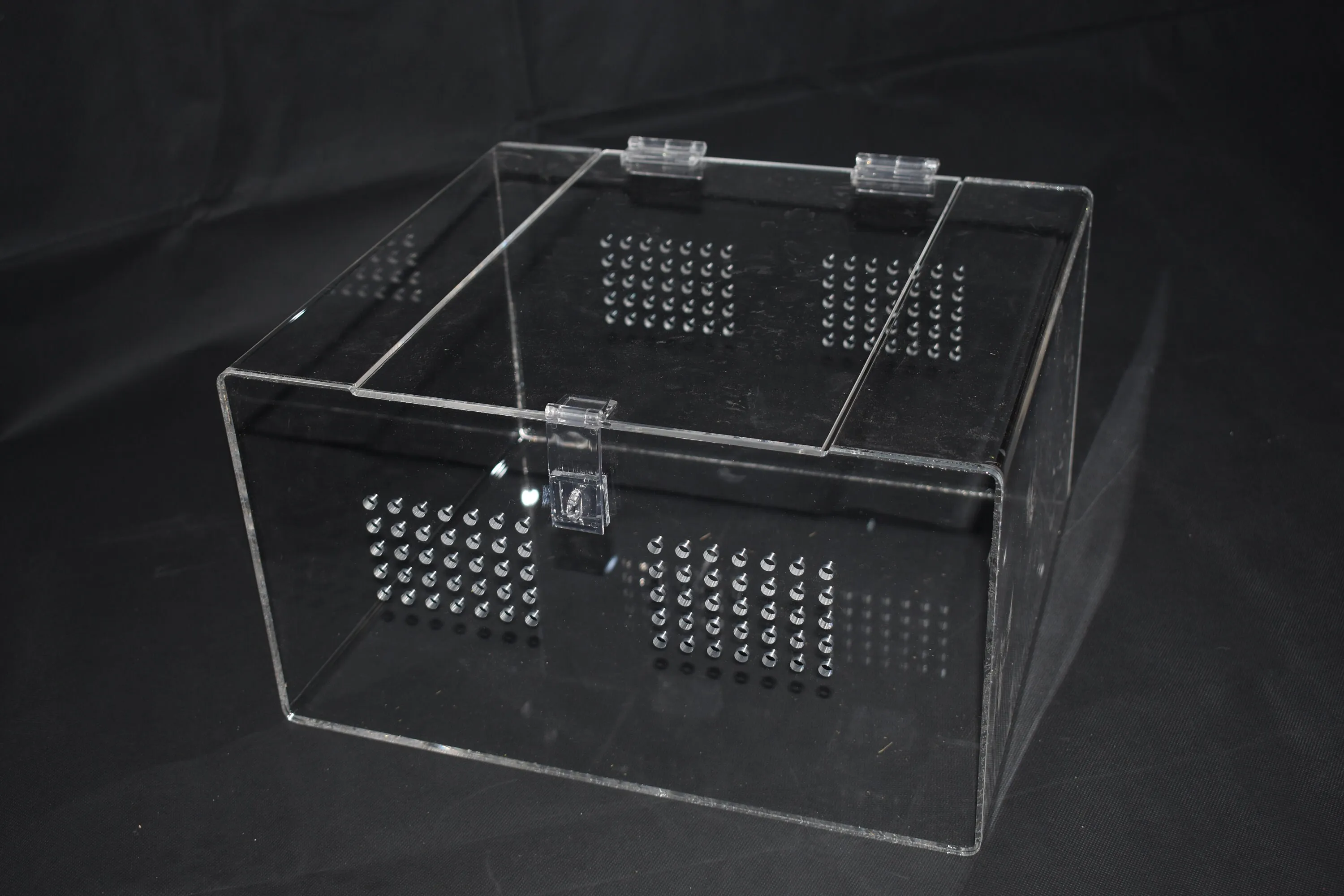
Different tarantula species have varying sizes and needs. For example, arboreal species, which are tree-dwelling, typically need taller tanks to accommodate their climbing behavior, while terrestrial species require more floor space. Consider the adult size of the species you’ve chosen. A large, terrestrial tarantula like a Goliath Birdeater (Theraphosa blondi) will require a much larger tank than a smaller species like a Greenbottle Blue (Chromatopelma cyaneopubescens). Research the specific needs of your tarantula species to determine the appropriate tank dimensions.
Growth Stage and Tank Size Adjustments
Tarantulas grow throughout their lives, undergoing molting to shed their exoskeletons. When you first acquire your tarantula, start with a smaller acrylic tank, appropriate for its current size. As your tarantula grows, you’ll need to upgrade to a larger tank. This gradual increase in space helps the tarantula feel secure, especially when they are younger and more vulnerable. Observe your tarantula’s growth and be prepared to upgrade the tank every few months, or as needed, to ensure it has enough room to move, hunt, and molt comfortably.
Essential Equipment for Your Acrylic Tank Setup
Once you’ve chosen the right size acrylic tank for your tarantula, the next step is setting up the essential equipment. The right equipment helps maintain the ideal environment for your tarantula, ensuring its health, safety, and comfort. From substrate to ventilation, each component plays a critical role in creating a thriving habitat. Proper setup minimizes stress, encourages natural behaviors, and makes it easier to care for your tarantula.
Substrate Selection and Depth
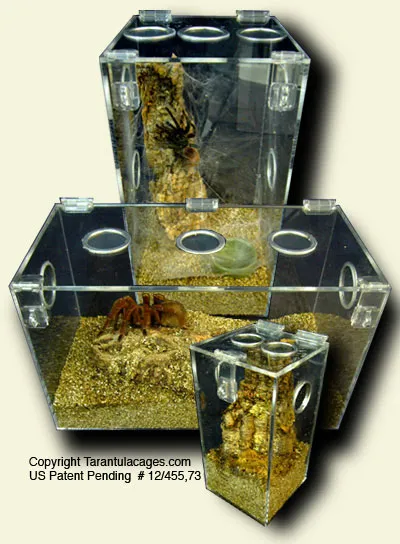
The substrate is the bedding material that lines the bottom of your acrylic tank, providing a comfortable surface for your tarantula to walk on and burrow in. The best substrate depends on the tarantula’s species and its natural habitat. Common substrate options include coconut fiber (coco coir), peat moss, and a mixture of potting soil and sand. The depth of the substrate also depends on the species, with burrowing tarantulas needing a deeper layer than those that prefer to stay above ground. As a general rule, the substrate should be deep enough to allow for natural burrowing behavior, typically 2-6 inches depending on the species.
Importance of Proper Ventilation
Adequate ventilation is critical for maintaining air quality and preventing the build-up of harmful mold and bacteria in your acrylic tank. Tarantulas need fresh air to thrive, and proper ventilation helps regulate humidity levels, preventing the tank from becoming too damp. Acrylic tanks typically have ventilation built into the design, often in the form of small holes or mesh screens. Ensure that these vents are not blocked by substrate or decorations and that there is sufficient airflow to keep the tank environment healthy. Poor ventilation can lead to respiratory problems and other health issues for your tarantula.
Water and Humidity Management
Maintaining the correct humidity levels is essential for your tarantula’s health, as it aids in molting and overall well-being. The required humidity level varies depending on the species. Tropical species need higher humidity than desert species. Use a hygrometer to monitor the humidity levels in the acrylic tank. To increase humidity, mist the tank with a spray bottle of dechlorinated water. Providing a shallow water dish is also crucial for providing your tarantula with a constant water supply, and helps to regulate humidity. Avoid over-misting, as excessive moisture can lead to mold growth.
Decorating Your Acrylic Tarantula Tank
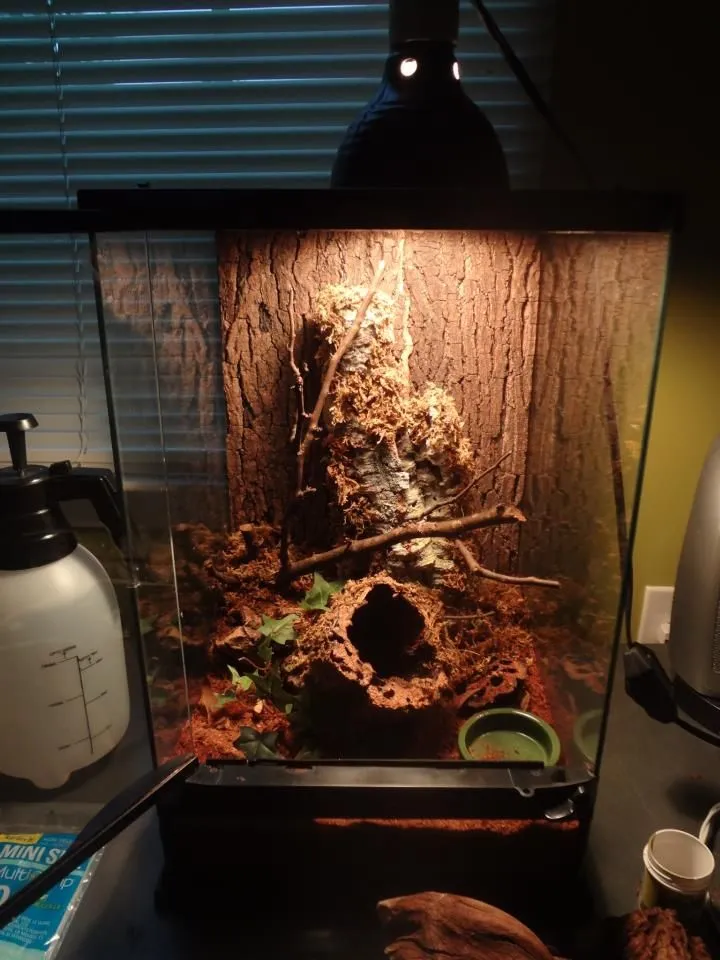
Decorating the acrylic tank provides enrichment, security, and a more natural environment for your tarantula. Decorations also add visual appeal and can mimic the tarantula’s natural habitat, encouraging it to exhibit natural behaviors. When selecting decorations, prioritize safety and functionality to ensure your tarantula’s well-being. Always choose items that are non-toxic, durable, and easy to clean.
Natural vs. Artificial Decorations
Both natural and artificial decorations can be used to create an engaging environment. Natural decorations include cork bark, branches, and dried leaves, which provide hiding places and climbing opportunities. Ensure all natural decorations are properly cleaned and sanitized before placing them in the tank. Artificial decorations, such as plastic plants and hides, are also useful, as they are easy to clean and maintain. When using artificial decorations, choose those made of non-toxic materials and avoid sharp edges that could harm your tarantula. A combination of natural and artificial elements can provide the most enriching habitat.
Creating Hides and Retreats
Hides are essential for tarantulas, providing a safe space where they can retreat and feel secure. This reduces stress and allows the tarantula to rest and molt in peace. Cork bark, hollow logs, and commercially available reptile hides are excellent choices. Position the hides in a way that allows your tarantula to easily access them. Multiple hides can be beneficial, allowing your tarantula to choose where it feels safest. Make sure the hides are large enough for the tarantula to fit comfortably inside and don’t have any sharp edges or small openings where the tarantula could get stuck.
Maintaining the Acrylic Tank Environment
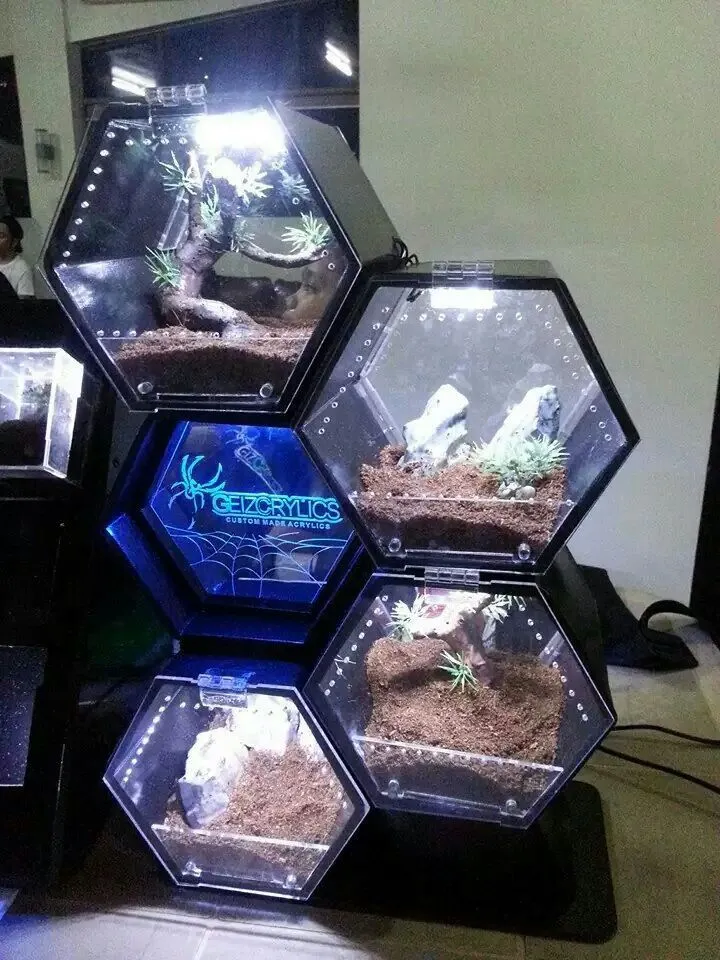
Maintaining the correct environment within your acrylic tank is an ongoing process that includes monitoring temperature, humidity, and cleanliness. Regular maintenance ensures that your tarantula’s habitat remains healthy and comfortable, promoting its well-being and longevity. A well-maintained tank minimizes the risk of illness and creates an optimal living space for your pet.
Temperature and Humidity Monitoring
Regularly monitor the temperature and humidity levels within the acrylic tank. Use a digital thermometer and hygrometer to ensure that the environment is within the ideal range for your tarantula’s species. The ideal temperature for most tarantulas is between 75°F and 85°F (24°C and 29°C), while humidity levels vary depending on the species. Make adjustments as needed to keep the environment stable. Place the thermometer and hygrometer in a location where they can be easily read and won’t be disturbed by the tarantula.
Cleaning and Maintenance Schedule
Establishing a regular cleaning and maintenance schedule is essential to prevent the build-up of waste, mold, and bacteria. Spot-clean the tank regularly, removing any uneaten food, feces, or dead insects. Deep-clean the tank periodically, replacing the substrate and cleaning all decorations. The frequency of cleaning depends on the size of the tank, the tarantula’s species, and the amount of waste produced. As a general guideline, spot-clean the tank weekly and perform a full cleaning every few months, or as needed. Use a reptile-safe disinfectant to clean the tank and decorations.
Feeding and Watering Your Tarantula
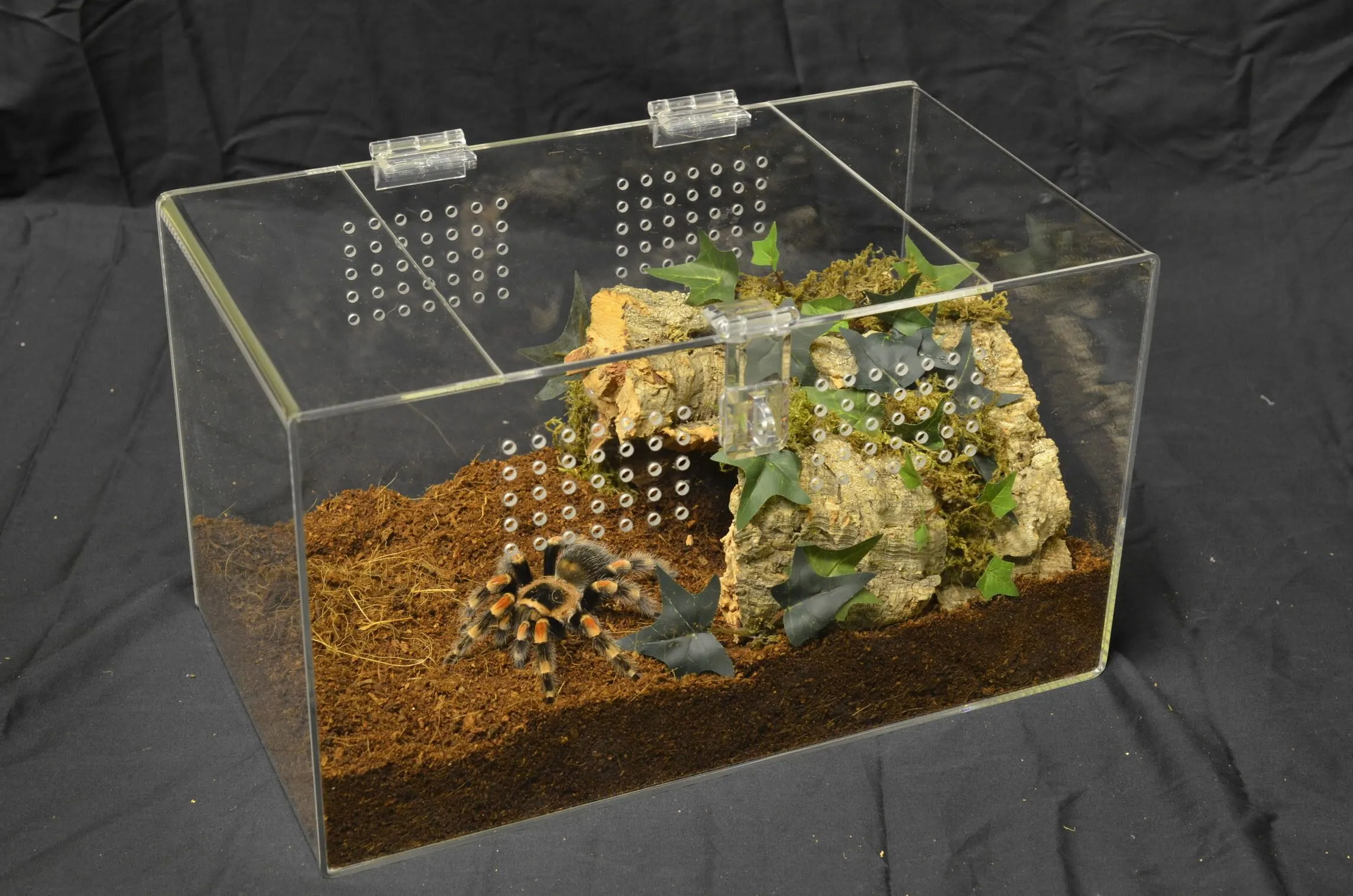
Feeding and watering are fundamental aspects of tarantula care. Providing the right type and amount of food, along with fresh water, ensures that your tarantula stays healthy and thrives. Tarantulas have specific dietary needs, so understanding these will help you to provide the best possible care for your pet.
Feed your tarantula appropriately sized insects or other invertebrates, depending on its size and species. Crickets, mealworms, and roaches are common choices, but the size of the food should be no larger than the tarantula’s abdomen. Feed juveniles once or twice a week, while adult tarantulas can typically be fed every one to two weeks. Remove any uneaten food within 24 hours to prevent mold and mites from developing. Always provide a shallow water dish with fresh, clean water. Refill the water dish regularly, and make sure it’s easily accessible for your tarantula.
